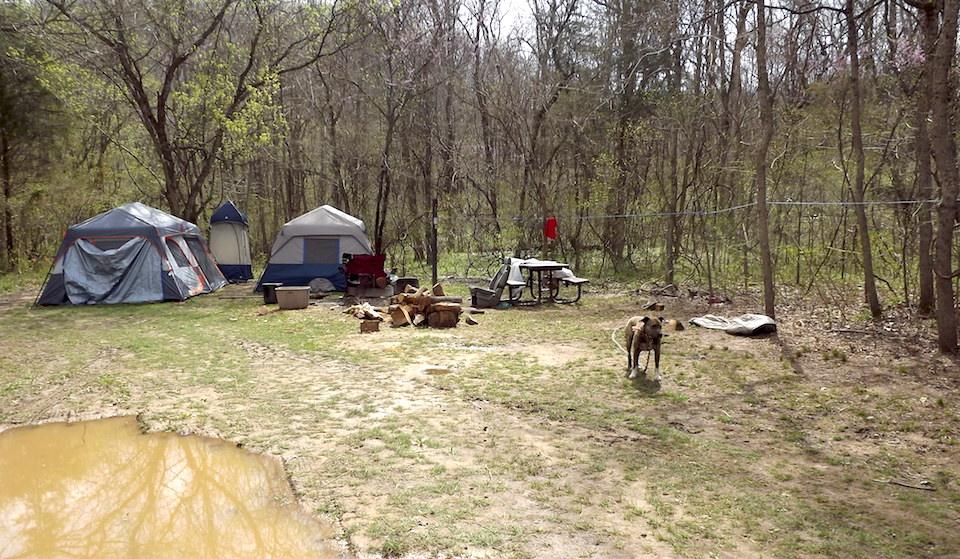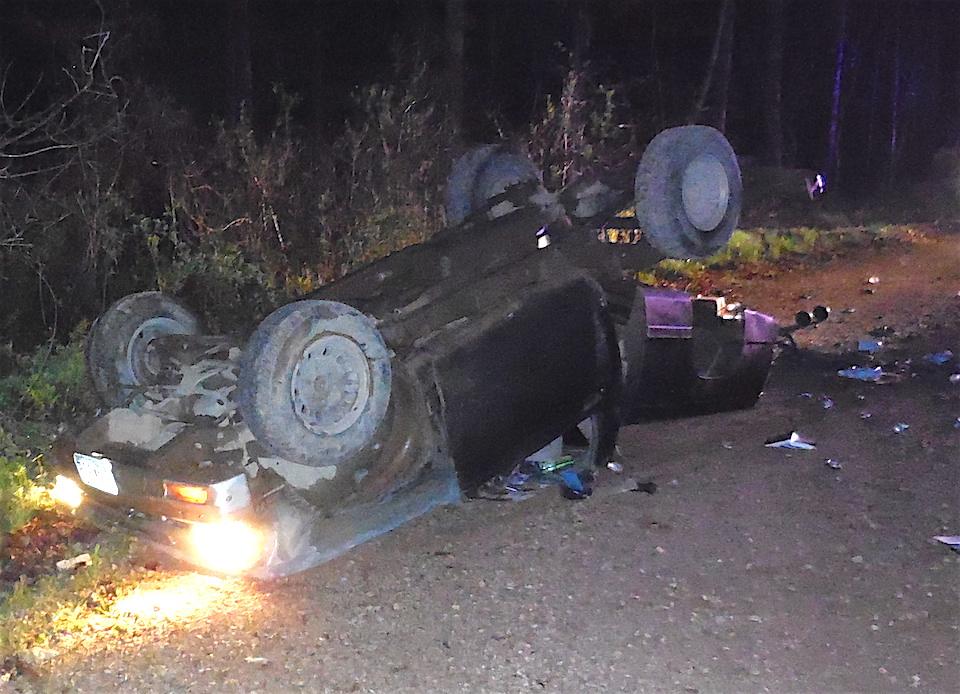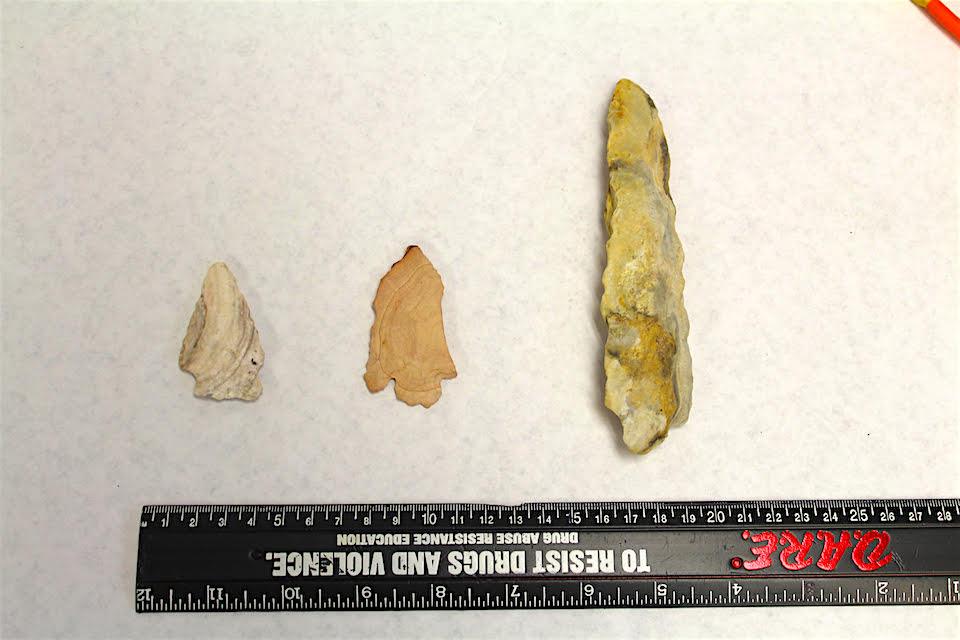
A Missouri couple used this campsite as a base camp for stealing archaeological artifacts from Ozark National Scenic Riverways/NPS
Two Missouri residents who ignored the adage that you never return to the scene of a crime have been convicted of stealing archaeological objects from Ozark National Scenic Riverways, with one being sent to prison and the other placed on supervised probation. The damage they did to the site they poached, however, "has irreparably hindered our ability to learn at this location forever," park staff said.
The two, Shane Munroe and Christy Bruton, were in a primitive campsite at the Rymers Campground when National Park Service rangers approached them on April 2, 2017, to discuss illegal excavations of an archaeological site in the park. Rangers had first noticed the campsite, which was guarded by two pit bulls, on March 26, 2017, and tried to talk to them on April 2, according to law enforcement personnel.
"Munroe and Bruton fled the scene in a pickup truck, subsequently flipping the truck and continuing to flee on foot," noted a release from the Park Service's Investigative Services Branch. "Rangers and special agents of the National Park Service Investigative Services Branch located evidence of extensive excavation and damage at the involved archaeological site. They also recovered evidence and artifacts from the campsite and vehicle crash site. Munroe and Bruton later returned to the campsite and were taken into custody.

The couple managed to flee from this pickup wreck, but were arrested when they returned to their camp/NPS
During the investigation, 164 illegal excavations were located across 2.5 acres, as well as tools, artifacts, and evidence of other stolen property, the release said. A resource damage assessment completed in March 2018 revealed that Munroe, 41, and Bruton, 45, caused $34,974 in damage to the archaeological site.
Artifacts removed from their context included: two projectile points, five projectile point fragments, 465 pieces of lithic debitage, 13 biface fragments, five cores, one scraper, three bifaces, one prehistoric pottery sherd, four historic pottery sherds, one historic glass fragment, one shell fragment, and one tested cobble.
A federal grand jury handed down indictments for Munroe and Bruton, both of Birch Tree, Missouri, in December 2018. Munroe pleaded guilty in June 2019 to a felony Archaeological Resources Protection Act violation, and Bruton pleaded guilty to a misdemeanor ARPA violation in October 2019. While Munroe was sentenced to a year in federal prison followed by three years of supervised probation, Bruton was handed three years of supervised probation, according to the Park Service.
Both were ordered to pay $2,000 in restitution. The damage they did to the archaelogical site, however, is lasting.

Some of the Native American points that were recovered by special agents/NPS
"Archaeological resources are non-renewable and irreplaceable portions of our collective heritage as American citizens. National parks like Ozark National Scenic Riverways exist to protect and preserve cultural and natural resources so they can be experienced and enjoyed by all Americans," said park spokesperson Dena Mattson. "When artifacts are disturbed and removed from their original context, archeologists lose the ability to learn about the lives of past people at a particular location. The site affected in this case contained significant information about prehistoric and historic habitation and land use.
"American Indians have been using the riverways and surrounding territories for thousands of years. Archaeological research has been taking place in the park for decades and has made significant contributions to the understanding of the prehistory of Missouri," she added. "In the case of this particular site, formal archaeological research at the site would have had the potential to yield information on the peopling of North America, the prehistoric occupation and subsistence strategies of the Jacks Fork River valley, prehistoric tool manufacture practices at habitation sites, stone tool material sourcing, the history of Euro-American farming practices in the Current River watershed, and the developing role of recreation and tourism in the twentieth century Missouri Ozarks economy."
According to Matteson, some of the artifacts from the site date to 9,900-11,500 years ago.
"The amount of destruction inflicted upon this site has irreparably hindered our ability to learn at this location forever," she said in an email.



Add comment